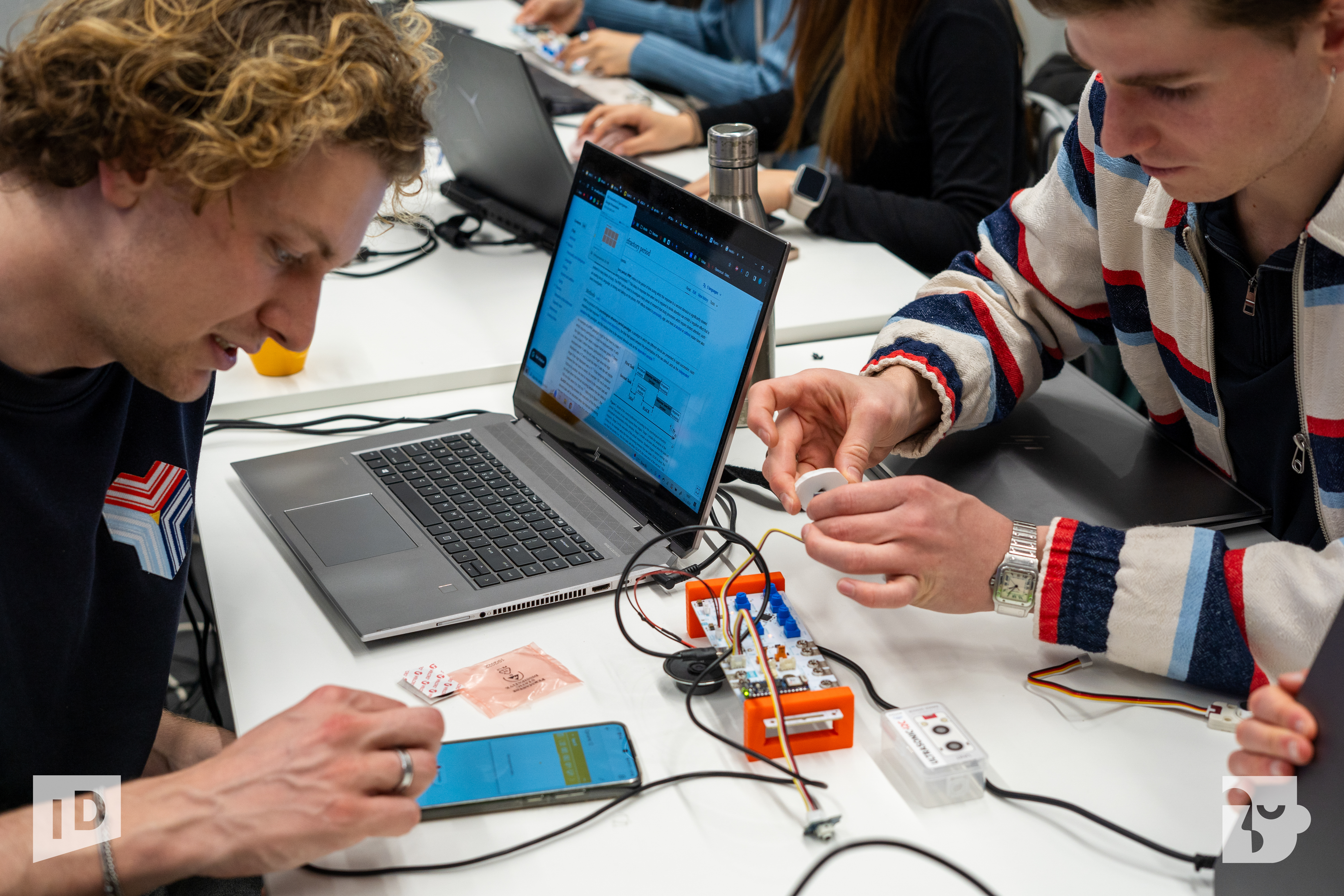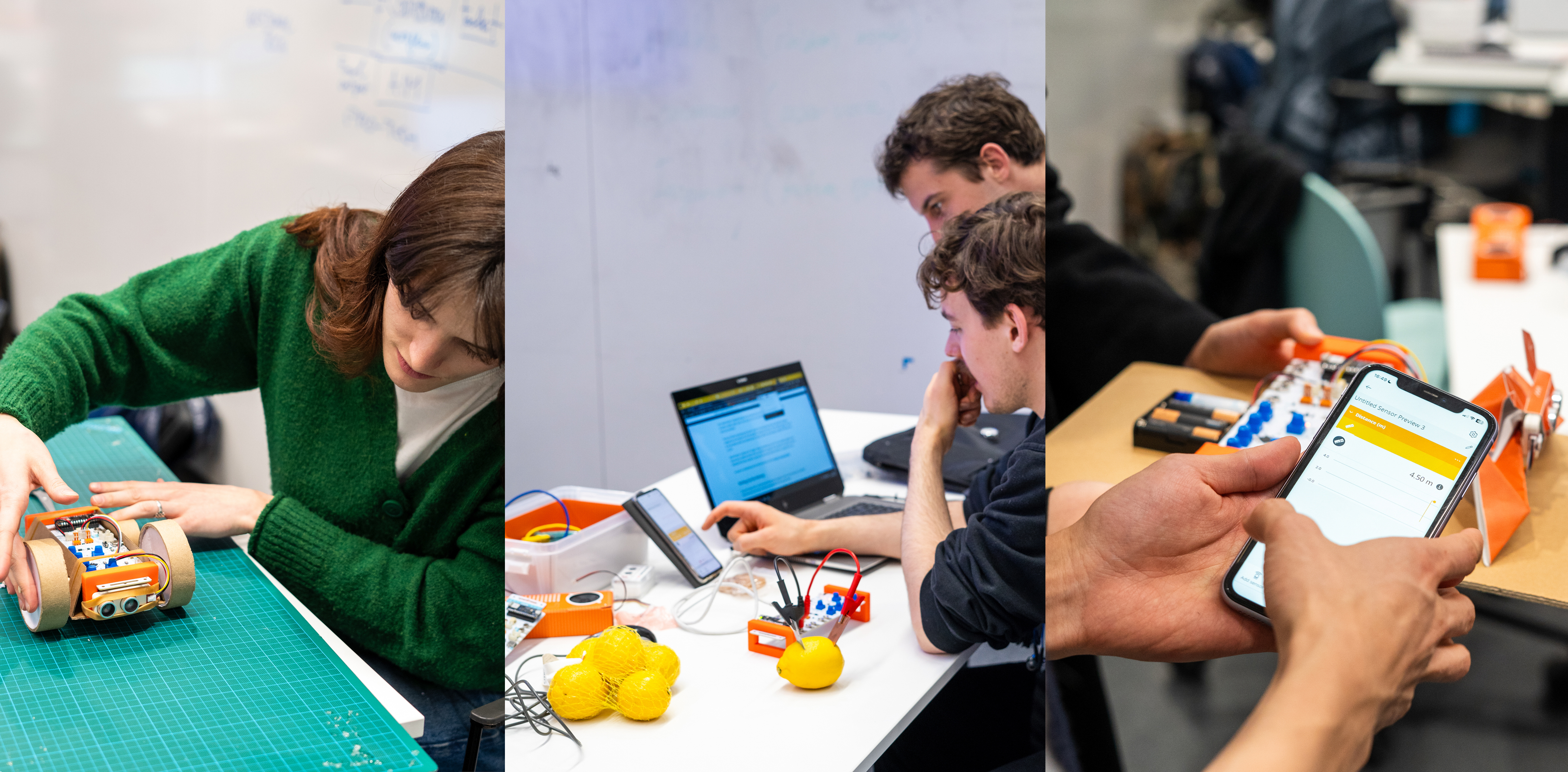
Designed to bridge the gap between theory and practical application, the Science Kit R3 brings physics to life through practical real-world experiments. It even aligns with both the national curriculum in England and the US AP Physics curriculum.
But did you know the Science Kit R3 isn’t just great for physics? As students at Faculty of Industrial Design Engineering at Delft University of Technology discovered, this versatile tool can also be used to tackle experiments across various disciplines – from biology and sport to chemistry and environmental science. The possibilities are endless!
Key features of the Science Kit R3
The Science Kit R3 aims to give students an engaging, hands-on learning experience while simplifying complex physics concepts. The key to its effectiveness lies in its comprehensive ecosystem of sensors along with the intuitive data dashboard from Science Journal app.
With over 15 sensors embedded on one board, the Science Kit R3 allows students to measure and collect data on a wide range of variables including air quality, temperature, sound, pressure, proximity, light, acceleration, electrical resistance and heaps more! These sensors turn abstract concepts – such as sound waves, distance measurement, and temperature changes – into tangible and relatable experiences, making science feel more accessible.
To take their learning to the next level, students can collect and analyze data in real time using the free Arduino Science Journal app. Connected to the Arduino board via Bluetooth®, the app seamlessly transitions data, enabling students to record, interpret, and gain meaningful insights from their experiments both inside and outside the classroom.
Beyond physics: expanding the use of Science Kit R3
The Science Kit R3 may have been designed with physics education in mind, but its potential extends far beyond this field. Earlier this year, students from Delft University took part in an Arduino workshop at the IDE Business Fair Hackathon Day. Their objective? To explore new and creative ways to use the Science Kit R3 in areas outside of physics.
The participants were divided into several groups, with each one focusing on a different discipline in the high school space: biology, chemistry, sport, mathematics, and environmental science. Here’s a brief look at some of the fantastic projects that emerged on the day:
- Biology – Using the Science Kit R3’s temperature, accelerometer, and ultrasonic sensors, one group created a wearable device to simulate how animals use their antennae to sense their surroundings. The project was designed to give younger students an interactive way to investigate nature while learning about animal features and their functions.
- Sport – In this project, participants developed a "Bop It, Twist It" interactive game to test how reaction times are influenced by choice and distractions. They measured the sensor responses in the Science Journal app. The project was designed to help high school students understand Hick’s Law and the importance of focus during sporting events.
- Chemistry – Using the Science Kit R3, the participants turned a simple lemon into a makeshift battery. The project aimed to help high school students understand how batteries work and provide a fun, hands-on introduction to redox reactions.
- Environmental science – Participants used the Science Kit R3 to explore pressing environmental challenges such as critical biodiversity loss and renewable energy viability. Leveraging the kit's array of sensors, students collected real-time data on factors like air quality, temperature, and soil moisture to assess the health of ecosystems and the feasibility of renewable energy sources.
- Mathematics – In this project, students used the Science Kit R3 to dive into the world of differential and integral calculus. By collecting and analyzing real-time data, they were able to turn abstract math theories into practical, hands-on experiences.

Blurred lines: the rise of interdisciplinary education
Over the last few years, we’ve seen a growing trend towards interdisciplinary learning in education – and for good reason! Combining insights from different subject areas not only sparks creativity but also boosts critical thinking, encouraging students to explore multiple solutions to a single problem.
As curricula increasingly focus on this approach, versatile tools like the Science Kit R3 become essential. The kit integrates effortlessly into classroom activities, giving teachers and students the ability to collect, analyze, and apply data in experiments that span a variety of subjects. Just look at the diverse projects showcased at the IDE Hackathon!
By bridging the gap between subjects like physics, biology, chemistry, and sport, the Science Kit R3 fosters collaboration and supports the shift toward a more holistic, interdisciplinary learning experience in the classroom.
Conclusion
The Science Kit R3 is packed with features that make learning exciting for both teachers and students. Aligned with curriculum standards and equipped with over 15 embedded sensors, it’s designed to effortlessly transition between subjects, from physics and chemistry to biology and environmental science. Plus, with the ability to connect to the Arduino Science Journal app, students can dive into real-world experiments, analyze data, and uncover the hidden science in everyday life.
We invite educators across all disciplines to unlock the endless possibilities the Science Kit R3 has to offer. By incorporating this dynamic tool into your lessons, you’ll not only make learning more engaging but also inspire students to discover the connections between different areas of the curriculum.
Ready to spark curiosity? Learn more about the Science Kit R3 here or head straight to our online store to order yours today!